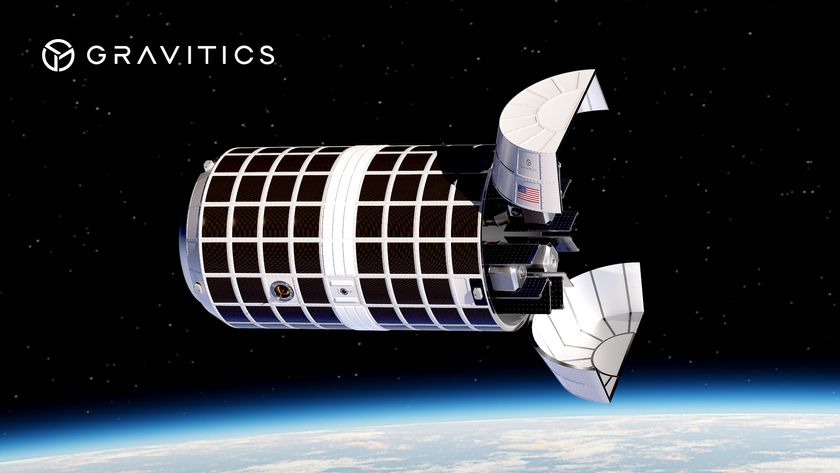Saturn's Flickering Lights Caught on Video
As on Earth, electrical fields above Saturn interact with atmospheric chemicals to produce shimmering lights above the polar regions.
Now NASA's Cassini spacecraft has captured video of Saturn's aurora.
Saturn's flicking polar lights dance higher above the planet – 750 miles (1,200 km) – than any known aurora in the solar system. They ripple like tall curtains, changing every few minutes, according to a statement today from the space agency.
"The auroras have put on a dazzling show, shape-shifting rapidly and exposing curtains that we suspected were there, but hadn't seen on Saturn before," said Andrew Ingersoll of the California Institute of Technology in Pasadena. "Seeing these things on another planet helps us understand them a little better when we see them on Earth."
Auroras appear mostly in the high latitudes near a planet's magnetic poles. When charged particles from the magnetosphere – the magnetic bubble surrounding a planet – plunge into the planet's upper atmosphere, they cause the atmosphere to glow. The curtain shapes show the paths that these charged particles take as they flow along the lines of the magnetic field between the magnetosphere and the uppermost part of the atmosphere.
The height of the auroras on Saturn exposes a key difference between Saturn's atmosphere and our own, Ingersoll said. While Earth's atmosphere has a lot of oxygen and nitrogen, Saturn's atmosphere is composed primarily of hydrogen. Because hydrogen is very light, the atmosphere and auroras reach far out from Saturn.
Earth's auroras tend to flare only about 60 to 300 miles (100 to 500 km) above the surface.
Get the Space.com Newsletter
Breaking space news, the latest updates on rocket launches, skywatching events and more!
The speed of the auroral changes in the video is comparable to some of those on Earth, but scientists are still working to understand the processes that produce these rapid changes. The height will also help them learn how much energy is required to light up auroras.
"I was wowed when I saw these images and the curtain," said Tamas Gombosi of the University of Michigan in Ann Arbor. "Put this together with the other data Cassini has collected on the auroras so far, and you really get a new science."
Ultraviolet and infrared instruments on Cassini have imaged Saturn's auroras before and captured other data, but in these latest images, Cassini's narrow-angle camera was able to capture the northern lights in the visible part of the light spectrum, in higher resolution. The movie was assembled from nearly 500 still pictures spanning 81 hours between Oct. 5 and Oct. 8. Each picture had an exposure time of two or three minutes. The camera shot pictures from the night side of Saturn.
The images were originally obtained in black and white, and the imaging team highlighted the auroras in false-color orange. The oxygen and nitrogen in Earth's upper atmosphere contribute to the colorful flashes of green, red and even purple in our auroras. But scientists are still working to determine the true color of the auroras at Saturn, whose atmosphere lacks those chemicals.
- Video: See Saturn's Flickering Lights
- Gallery: Earth's Auroras
Join our Space Forums to keep talking space on the latest missions, night sky and more! And if you have a news tip, correction or comment, let us know at: community@space.com.

Space.com is the premier source of space exploration, innovation and astronomy news, chronicling (and celebrating) humanity's ongoing expansion across the final frontier. Originally founded in 1999, Space.com is, and always has been, the passion of writers and editors who are space fans and also trained journalists. Our current news team consists of Editor-in-Chief Tariq Malik; Editor Hanneke Weitering, Senior Space Writer Mike Wall; Senior Writer Meghan Bartels; Senior Writer Chelsea Gohd, Senior Writer Tereza Pultarova and Staff Writer Alexander Cox, focusing on e-commerce. Senior Producer Steve Spaleta oversees our space videos, with Diana Whitcroft as our Social Media Editor.










